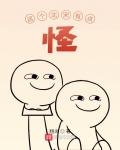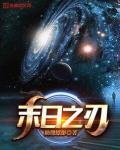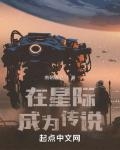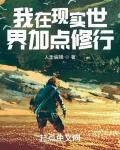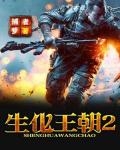Volume 4: Spacetime Singularity Chapter 27 Light and Shadow
Most of the coastal cities in the north have broad seaside avenues and piers that extend dozens of meters into the coastline. Throughout his high school career, Fang Chengdu liked to stand on them and feel the sea breeze.
The light and shadow are in perfect harmony, the smoke and waves are vast; the vast waters connect the mountains, and the layers are dense and rugged.
In the face of the waves that surge tirelessly throughout the year, any emotion of tiny humans will be washed away in an instant, leaving only blue and loneliness.
When he was very young, he began to think about the sea: Is the other side of the sea still the sea?
If we keep going down, is there another world buried in the dark blue depths?
Later, as he grew older, he understood that there were islands and continents on the other side of the sea, and that there was indeed another world under the sea, about which humans still know very little to this day.
As he grew up, the object of his thoughts changed from the ocean to the universe. What is on the other side of the universe? Do different worlds have different physical laws?
If one day, humans reach the end of the universe, what will the object of our curiosity become ?
At this moment on the pier, there is a huge black shadow under the blue curtain.
It was an organic whole made of metal, with different components of its body connected together by exchange particles, and the inside and outside of its body were covered with various patterns.
This was the first time that Fang Cheng looked at this metal monster at such a close distance, and since he could now pass through space, he could slowly observe every detail of the monster from the inside out.
The biggest difference between this type of life and carbon-based organisms is that there is no liquid in its body at all. This shows that the energy required to maintain life and the metabolic products produced by the reactions are not transported through liquid channels throughout the body.
Not only that, this life form does not quite fit the image of a "robot" as imagined by humans. There are no wires, tubes, or joints inside its body. There are only some fine lines covering the surface, faintly flashing a faint green light.
Although the high-speed movement in space will make all macroscopic objects appear to have stopped in time, the speed of light is always constant. The light emitted by this world will still fly to the observer's eyes at the fastest speed in the known universe.
Fang Cheng placed his hand above the light source, and the dim green light illuminated his palm like a leaping bonfire .
If this ball of green light is really photons, they are constantly passing through the interface of space, from the static space of the earth to the connected space where he is.
Fang Cheng realized that this was impossible in superstring theory, because electromagnetic waves could not penetrate the interface of the membrane, and only gravity could travel between different spaces. But everything in front of him was still still, which meant that he was still a bystander beyond the universe.
Then there are only two possibilities: either superstring theory is wrong; or the green light in front of us is not a photon, but a new field, a new particle that can penetrate the space membrane and move freely in different universes.
What's more, this new particle can be projected onto the human retina, disguising itself as visible light to the brain.
If we accept the hypothesis of new particles, then since this kind of life was created on Earth, this new particle must have existed on Earth, but humans did not discover it or distinguish it from photons.
Thinking of this, a bunch of questions came to Fang Cheng's mind. This new particle that serves as a field is a boson. If we assume that there are no new fermions on the earth that humans are unfamiliar with, this boson should be exchanged with existing matter and transfer energy between objectively existing entities.
And since the molecules that make up the retina can sense it, this means that this interaction can affect the electrons inside those molecules, which further confirms that this new boson will react with the leptons that make up everything in the world.
If we go a step further and accept the fact that it will react with known matter, then if this new boson really exists, will all the previous collider results be affected by it?
This is a very terrifying conclusion that shakes the foundation of high-energy physics.
If you are a professor or doctoral student specializing in this problem, you will probably be very excited that you have discovered new physics. After all, you can publish a lot of articles to explain this new particle, and the golden age of particle physics is likely to come again.
But Fang Cheng just felt fear, because the familiar concepts suddenly became unfamiliar. What he needed now was not new discoveries, but a sense of security.
He didn't dare to think about it anymore. If all this was true, then the superstring theory he had used to determine the existence of this new particle was wrong. After all, it was also built based on the standard model and the existing quantum field theory system.
This is an error that even someone like him who only has a superficial understanding of superstring theory can find.
If all the previous reasoning was wrong from the beginning, then his entire logical loop would fall apart, and his reasoning would just be in vain.
He now finally began to understand why the aliens said that field theory was not a very good paradigm...
Now he can only force himself to hypnotize himself, that is, only superstring theory is wrong, and most of the field theory is still correct. In this way, at least there is a basic logic when thinking.
After all, the unique correctness of superstring theory has not been confirmed by any experiments conducted by humans so far. At best, it is just a big toy. It is very reasonable that it is not applicable under new conditions.
Fang Cheng's confidence in human science has been basically wiped out.
In addition to these glowing lines, he saw that the body of the protozoan was filled with various holes. The diameters of these holes were very, very small, just enough to be seen by the naked eye.
Fang Cheng looked at them carefully for a long time, but could not see anything from the distribution of these lines.
Is it a nerve channel? Or its blood vessels? Or is it a trachea? However, this creature does not have a breathing process, so it should not need a trachea.
Following the direction of these pipes, he slowly walked to the core of this huge monster's body.
It was a cube. Unlike the thin slice brain they had made before, the twelve sides of this cube seemed to be exactly the same length, and the microscopic patterns on it seemed to be completely different from those that were etched at the beginning.
"Not done yet?"
Along with the female voice behind me came a warm touch.
"I hope I didn't disturb you... I saw you stayed in this dark shadow for a long time, so I came to take a look..."
"Oh, it's okay. I'm just thinking about a question...why don't you go out for a walk with me?"
His mind was a mess right now, so instead of being alone he'd better talk to someone.
There's plenty of time anyway.
"Actually, I do have a question for you..."
"Huh? Ask me?"
"The brain structure of this new life form is completely different from the one we created at the beginning. I find it very strange. Why can the process of self-replication change the shape of the brain?"
Ning Yu'an was stunned for a moment. She didn't expect that he would actually ask her such a question.
"Why do you think I would know this..."
"Isn't that what you studied?"
"I, I, we are studying the brains of Earth creatures, right?"
“Isn’t this an Earth creature?”
To be honest, it is true.

